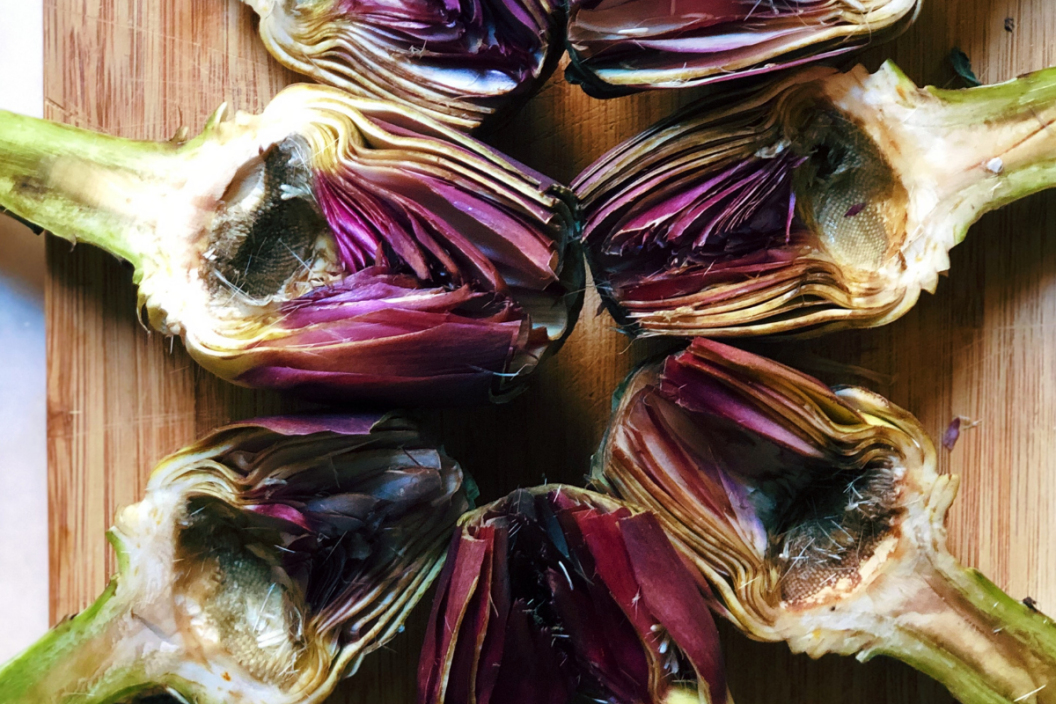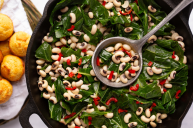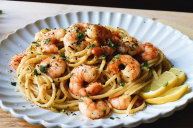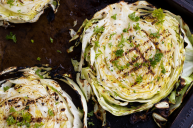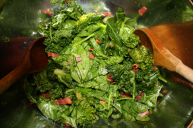Artichokes are one of the most interested yet intimidating vegetables in the produce aisle. Although they are delicious and packed with nutrients often people steer away from artichokes because they are unsure exactly how to eat them (besides once they are already in a dip) or how to cook them. However, once you understand the anatomy and how easy they are to prepare, artichokes will soon become one of your new favorite delicacies.
Videos by Wide Open Country
What Are Artichokes?
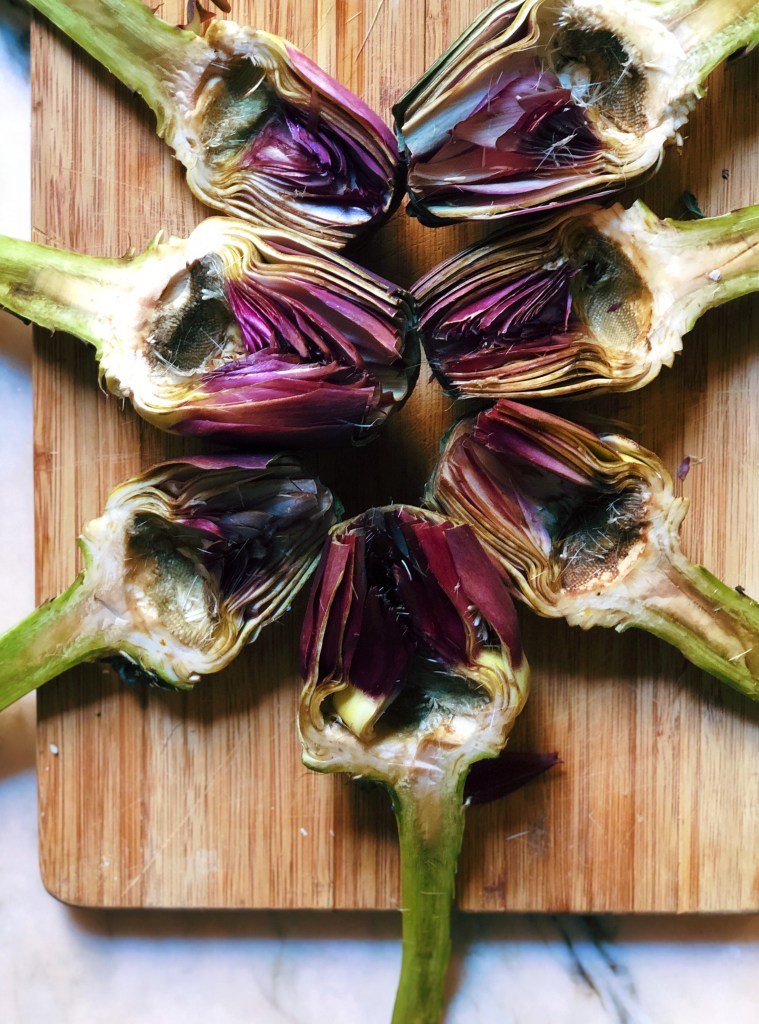
Lauren Paige Richeson
Artichokes are the bud of a thistle— a family of flowering plants characterized by prickly leaves. The edible portion of the artichoke consists of the flower buds before the flowers come into bloom. The outside of the artichoke is surrounded by dark green petals — or "bracts" which cover a fuzzy center called the "choke" that sits on top of a meaty core, known as the "heart".
Although they're typically cooked whole, only the base of the petals, the center of the stem, and the artichoke heart are completely edible.
Artichoke flesh is nutty, verdant, and a little sweet — with a flavor reminiscent of fresh corn. Both artichoke leaves and hearts are a tasty vessel for all sorts of creamy dips, like garlicky mayo (recipe below!) or herby lemon butter.
Growing Artichokes in the South
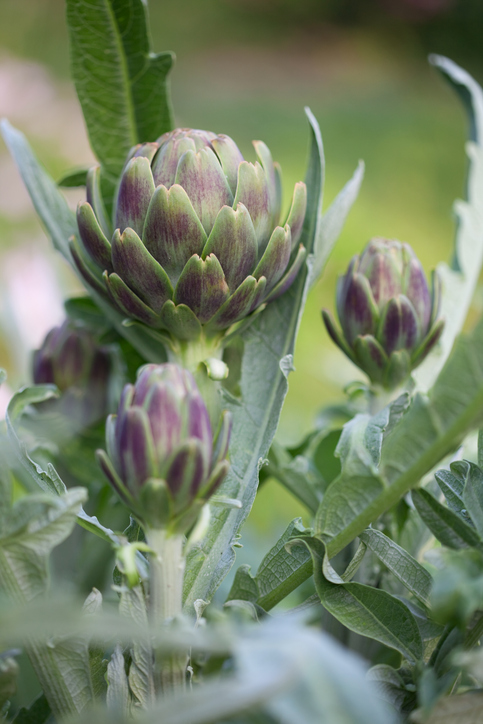
Getty Images
Currently, about 99% of artichokes grown in the United States are produced in California, however, for the past few years, researchers from the UF/IFAS Agricultural Extension Center have begun testing which varieties and nutrient management methods perform best for production within the region. North Florida's cool and dry winters mimic those of the Mediterranean where artichokes are considered indigenous.
Artichokes are a very popular produce option in New Orleans amongst the Italian-American community that immigrated to NOLA in the 1880s. Mostly from Sicily, Italians helped influence New Orleans culture and cuisine into what it is today.
The Health Benefits Of Artichokes
Not only are artichokes delicious but they are packed with vital nutrients and antioxidants. Artichokes rank number one overall vegetables in terms of antioxidant count and are rich in fiber, folate, Vitamins C and K, and magnesium.
Artichokes contain both prebiotics and probiotics which are essential for a healthy gut and have long been used as a digestive aid to reduce inflammation leading to improved immunity, digestion, combat fatigue, and nutrient absorption. They can fit into any diet and lifestyle since they are naturally gluten and grain-free, dairy-free, nut and nightshade-free, and low in carbohydrates and fat.
How To Choose Artichokes
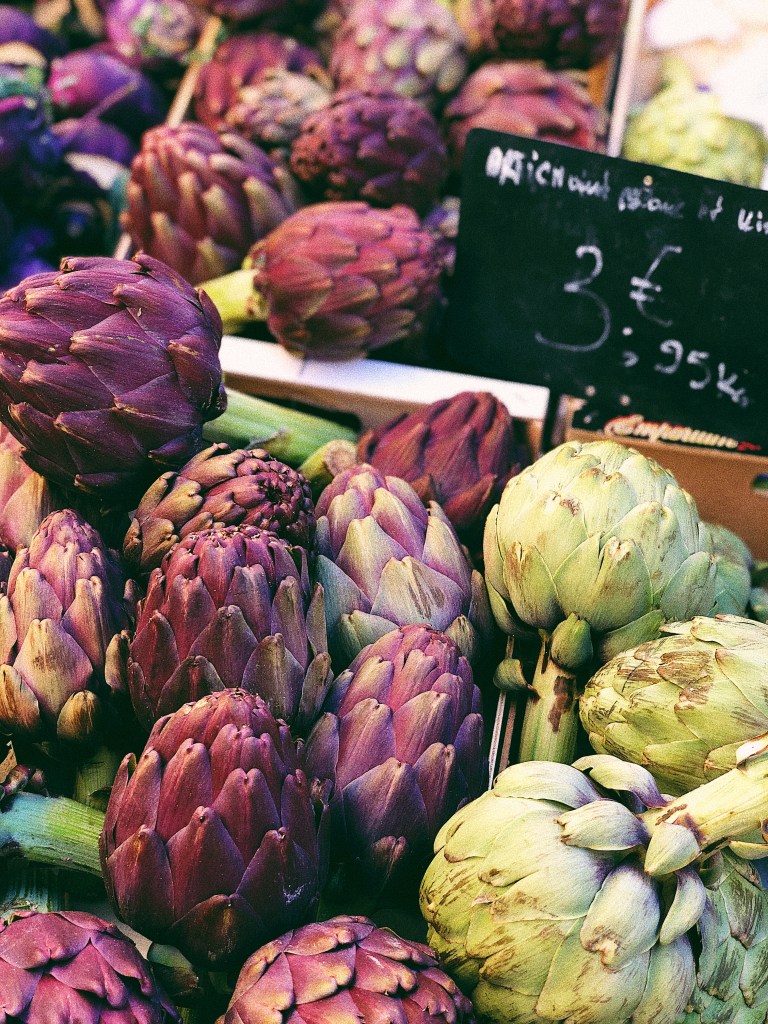
Lauren Paige Richeson
When shopping for artichokes, there are a few tips that will help make sure you are selecting the freshest ones.
Globe artichokes are considered to be the 'true' artichokes and are available all year round, but at their best between June and November. Fresh artichokes should feel firm, slightly heavy, and have tightly closed leaves. A quick way to test for freshness is if the artichoke leaves "squeak" when squeezed.
If an artichoke feels light and the leaves have started to open up, this means the artichoke is probably dried out and likely past its prime.
Look for artichokes with leaves that have a bright-green hue. Some artichokes are covered in spots of purple or brown but these are fine to eat too. Although the blemishes may not look as pretty, these "Frost Kissed" artichokes are actually more sought after (and expensive) than green. The frost conditions enhance the flavor of the artichoke giving it a richer nutty taste.
How to Prep and Cook Artichokes
Artichokes can be prepared in a variety of ways. Depending on how you plan to use artichokes they can be boiled, grilled, stuffed, steamed, baked, or braised.
The two most common methods for cooking artichokes are boiled or steamed. While both options are easy to make, each can result in two drastically different tastes. Steaming keeps artichokes moist and tender, while boiling tends to make the flesh watery and dilutes the flavor.
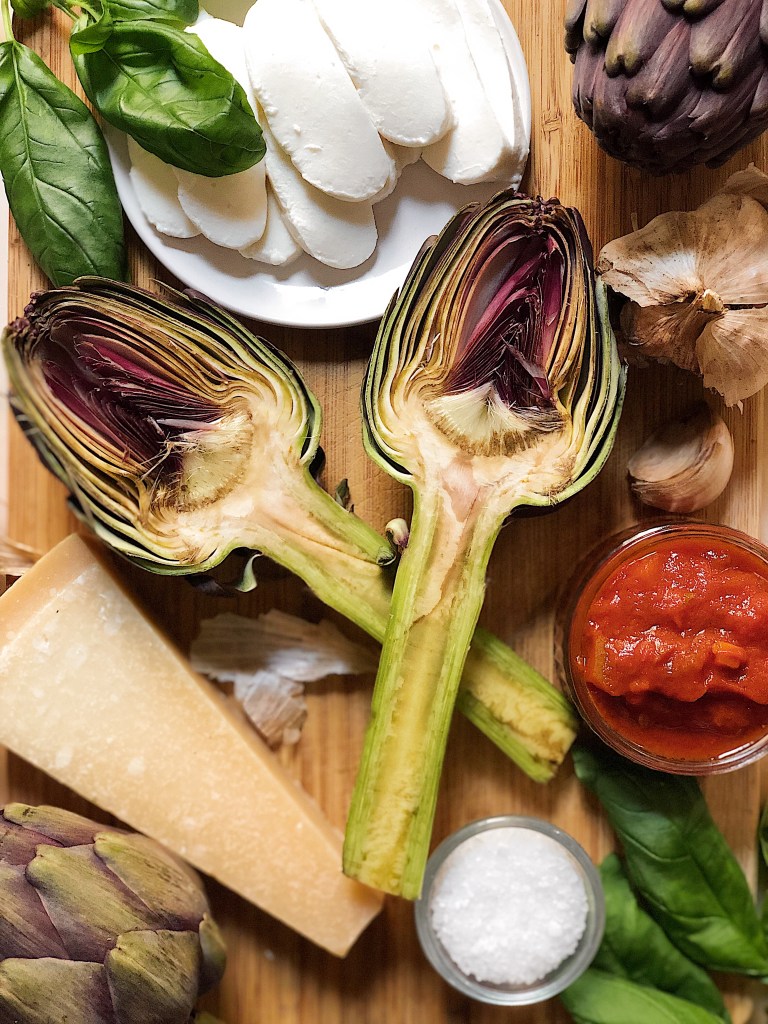
Lauren Paige Richeson
No matter how you decide to cook your artichokes, getting them prepped is the first step.
Trim the leaves:
Start by using a pair of kitchen scissors to trim off about a third of an inch from each leaf. This will help make the artichokes easier to handle and more aesthetically pleasing.
Cut off the top:
Using a serrated bread knife, slice about one inch off the top of the artichoke, right around where it starts to taper.
Remove small leaves:
Pull off any smaller leaves towards the base and on the stem and discard.
Remove the stem:
Using a sharp chef's knife, slice off the stem at the artichoke base.
Rinse the artichokes:
Rinse the artichokes under running cold water and slightly open up the leaves to remove any dirt hidden inside.
To steam the artichokes:
In a large pot, put a couple inches of water, the garlic, a slice of lemon, and a bay leaf (this adds wonderful flavor to the artichokes). Insert a steaming basket.
Cook the artichokes:
Place artichokes on top of the steaming basket. Cover the pot. Bring to a boil and reduce heat to simmer. Cook for 25 to 35 minutes or longer, until the outer leaves can easily be pulled off.
Artichoke Cooking Tips
- The inner cores of the stems taste similar to the heart. You can leave the whole long stem on the artichoke, just cut off the very end and remove the tough outside layer of the stem with a vegetable peeler.
- If your artichokes are going to sit out for more than a few minutes before cooking, submerge them in a large bowl of lemon water to keep them from oxidizing.
- Cooking time will depend on the size of the artichokes, the larger ones will take longer to cook.
- Artichokes can also be cooked in a pressure cooker on high for about 5-15 minutes.
- If you don't own a steamer basket, use a heat-proof metal colander or mesh strainer that fits snugly inside the pot instead.
How to Eat Artichokes

Lauren Paige Richeson
In addition to learning how to prepare and cook an artichoke, knowing how to eat them is the most important step.
The artichoke flesh can be removed and added into a recipe or the whole steamed artichoke can be served with a dip and enjoyed as a dish by itself. Start by pulling off one of the outermost petals. If your artichoke is cooked correctly, the outer petals of your artichoke should be easy to remove. The edible part is located at the base of the petal. Pull the base of the petal through slightly clenched teeth to strip off the petal meat. Pull off and eat the individual petals from the cooked artichoke, marking your way down to the heart of the artichoke.
When you get to the heart of the artichoke, you will notice the fuzzy hair layer referred to as the "choke". This part of the artichoke is not edible. Remove the choke by using a spoon to scoop it out. Underneath the artichoke choke is the heart. Cut the heart into pieces and dip into melted butter, a vinaigrette, or a sauce to eat.
READ MORE: TV Host Messes Up Holiday Artichoke Dip Recipe and Forces Co-hosts to Eat it
Products featured on Wide Open Eats are independently selected by our editors. However, when you buy something through our links, we may earn a commission.
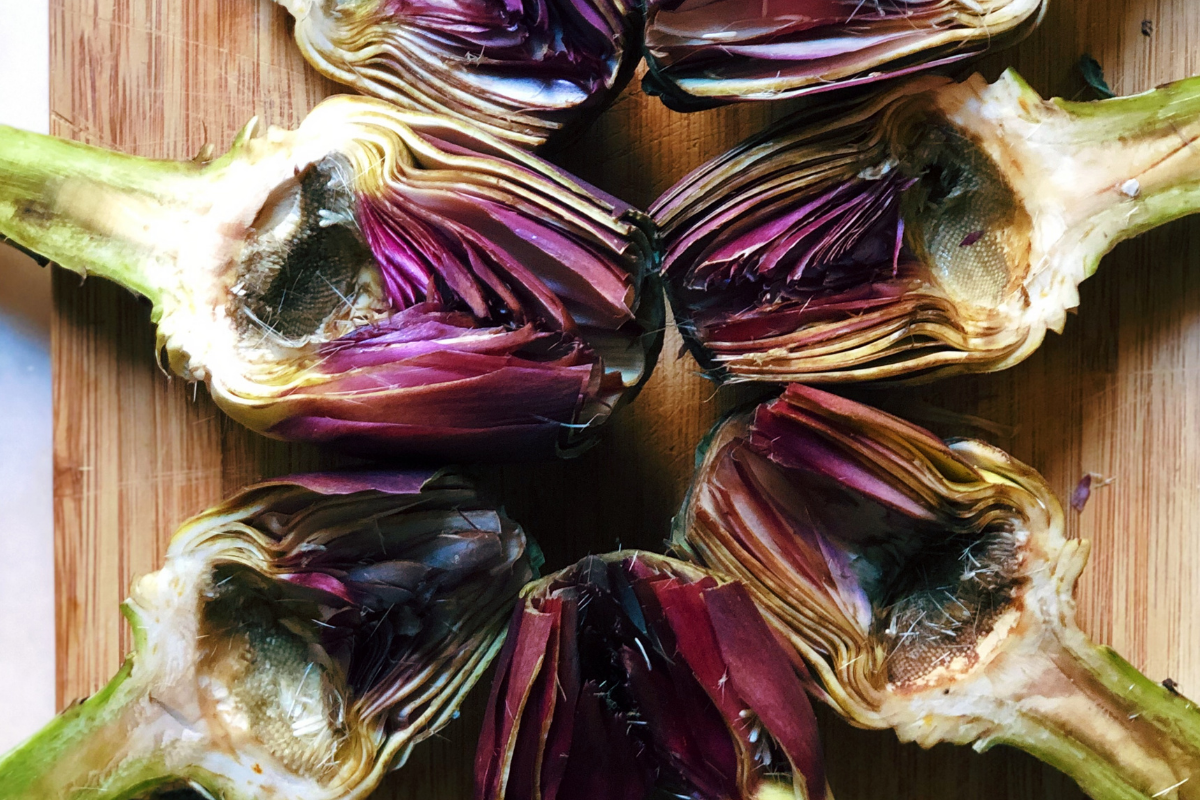
Baked Artichoke Parmesan
Ingredients
- 1/4 cup olive oil
- 5 garlic cloves minced
- 1/2 teaspoon red chili flakes
- 1 14 oz can chopped tomatoes
- sea salt
- fresh ground black pepper
- 4 medium artichokes steamed and sliced in half
- 2 teaspoons dried oregano
- 1 lb fresh mozzarella cheese sliced
- 1 cup fresh grated parmesan cheese
Instructions
- Preheat the oven to 400 degrees.
- In a heavy pot, heat the oil over medium heat until lightly smoking. Add the garlic, red pepper flakes and cook a minute or two until the garlic is fragrant. Add the tomatoes and season well with salt and pepper, and bring to a boil.
- In an 8 x 8 inch oven-proof casserole dish, first, spoon a little sauce over the bottom, then arrange the artichokes to cover. Season artichokes with salt, pepper and oregano.
- Spoon the sauce over the artichokes and spread until covered. Place sliced mozzarella cheese on top of the artichokes, then cover with the rest of the sauce.
- Place the casserole dish in the oven and bake until bubbly and lightly browned, about 35 to 40 minutes.
- Remove from the oven and top with remaining sliced mozzarella cheese. Return to the oven and bake until the cheese has melted, about 5-10 minutes.
- Once the cheese has melted, remove the dish from the oven and sprinkle grated parmesan on top of each, then serve and enjoy
